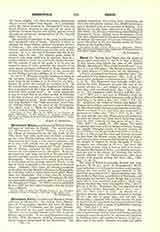

Hermopolis Magna, a titular see of Thebais Prima, suffragan of Antinoe, in Egypt. The native name was Khmounoun; in Coptic, Chmoun. It is today the village of Ashmounein on the left bank of the Nile, about four miles southwest of R6da (a station on the Cairo-Thebes railway, 180 miles from Cairo). Khmounoun dates from a very remote antiquity, and at a very early period was an important religious center. It worshipped a moon-god Thoth (Hermes), ibis or baboon, attended by four pairs of deities, whence the name Khmounoun (the eight). It played an important part from the sixth to the eleventh dynasties; and later became the chief town of the nome of Hermopolis. To the west of the village is the Ibeum, or burial place of the animals sacred to Thoth; at the foot of Gebel-el-Bersheh is the necropolis of the local rulers. Palladius (Hist. Laus., hi) records a tradition to the effect that the Holy Family came to Hermopolis. St. Colluthus suffered martyrdom there under Maximian and Diocletian. For a time, also, St. Athanasius lived there. Lequien (Oriens Christianus, II, 595) mentions eight bishops; and the place is still a see for the Monophysite Copts. In 1895 it was reestablished by Leo XIII for the Coptic Catholics, but the titular lives at Minieh.
S. PETRIDES

